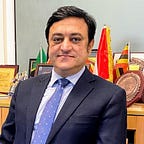Scoliosis Treatment Options: Non-Surgical to Advanced Surgery
Scoliosis, characterized by a sideways curvature of the spine, affects individuals differently based on age, severity, and underlying health. Treatment approaches range from non-surgical to advanced surgical options, tailored to manage symptoms and improve spinal alignment. This comprehensive guide explores the various scoliosis treatment options available today.
Understanding Scoliosis
Scoliosis is not a one-size-fits-all condition. It can be structural, meaning the curve is rigid, or functional, where the spine appears curved due to another condition. The most common types include:
- Idiopathic Scoliosis: The cause is unknown, and it often appears during adolescence.
- Congenital Scoliosis: Present at birth due to vertebral malformation.
- Neuromuscular Scoliosis: Related to conditions affecting nerve and muscle control, like cerebral palsy.
Non-Surgical Treatment Options
1. Observation
In mild cases where the curvature is less than 25 degrees, particularly in children and adolescents still growing, observation may be the best course of action. This approach requires regular monitoring through X-rays to see if the curve progresses.
2. Bracing
For moderate scoliosis (curvatures between 25 and 40 degrees), bracing may be recommended. Although it cannot correct the curve, it helps prevent further progression. Popular braces include:
- Boston Brace: Covers the torso and can be worn under clothes.
- Charleston Bending Brace: Worn at night and applies pressure to reverse the curvature.
Key Points to Note About Bracing:
- Effective in children whose bones are still growing.
- Should be worn consistently for at least 16–23 hours daily.
3. Physical Therapy and Exercise
Physical therapy focuses on stretching and strengthening the back muscles. Exercises improve posture, flexibility, and pain management, emphasizing:
- Schroth Method: Customized exercises that focus on derogating, elongating, and stabilizing the spine.
- Core Strengthening: Strengthens the abdominal muscles to provide better spinal support.
4. Chiropractic Care
Chiropractic care aims to reduce pain and improve mobility. It involves spinal manipulation, massage, and exercise. While it doesn’t correct the curvature, it can relieve symptoms for some patients.
Minimally Invasive Treatment Options
1. Spinal Injections
In cases where scoliosis is accompanied by significant pain due to nerve compression, injections of anti-inflammatory medication can help. Common injections include:
- Epidural Steroid Injections: Reduce inflammation and pain in the affected area.
- Facet Joint Injections: Target the joints linking vertebrae to reduce pain.
2. Electrical Stimulation
This method uses low-level electrical currents to stimulate the muscles supporting the spine, potentially slowing curve progression.
Surgical Treatment Options
1. Spinal Fusion
Spinal fusion is the most common surgery for severe scoliosis cases (curvatures above 45 degrees). It involves:
- Realigning the spine.
- Inserting rods, screws, or hooks to hold the spine straight.
- Fusing vertebrae with bone grafts to maintain the new alignment.
Benefits of Spinal Fusion Surgery:
- Provides significant correction of the spinal curve.
- Reduces pain and prevents further curvature progression.
2. Growing Rods
Growing rods are suitable for children with severe scoliosis who are still growing. The rods are surgically implanted along the spine and can be lengthened periodically to accommodate the child’s growth.
3. Vertebral Body Tethering (VBT)
A newer option for pediatric scoliosis patients, VBT is less invasive and involves anchoring screws to the spine and connecting them with a flexible tether. The tether applies tension to correct the curve, allowing the spine to grow straighter.
Advantages of VBT:
- Preserves spinal mobility.
- This may result in a shorter recovery time.
Conclusion
Selecting the appropriate scoliosis treatment depends on various factors like age, the severity of the curve, and underlying health conditions. Non-surgical options like bracing, physical therapy, and chiropractic care are suitable for mild to moderate cases. Meanwhile, advanced surgical treatments like spinal fusion and VBT provide solutions for severe cases where non-surgical methods are ineffective.
For those seeking Scoliosis Treatment in India, it’s crucial to consult with a specialist to identify the most suitable approach. Dr Arun Saroha, a renowned neurosurgeon at Max Hospitals, is well-versed in both non-surgical and surgical treatments, ensuring patients receive comprehensive and personalized care. By understanding the range of available treatments, individuals can make informed decisions to manage scoliosis effectively.
